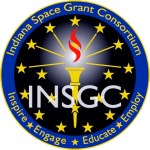Explore NASA STEM Gateway
Applying for NASA internships can be a transformative experience for students. Here's why students should be encouraged to apply and how to motivate them to seize this opportunity:
Why Apply for NASA Internships?
- Real-World Experience: NASA internships provide hands-on experience in cutting-edge scientific and engineering projects, allowing students to apply classroom knowledge to real-world challenges.
- Mentorship and Networking: Interns work alongside NASA professionals and researchers, gaining invaluable mentorship and establishing networks that can be beneficial for future career opportunities.
- Skill Development: Interns develop technical skills, problem-solving abilities, and professional competencies that are essential in the STEM fields.
- Resume Building: Having a NASA internship on a resume stands out to potential employers and graduate programs, demonstrating a high level of competence and experience.
- Inspiration and Motivation: Working on space exploration projects can ignite a passion for science and technology, inspiring students to pursue advanced studies and careers in these fields.
OSTEM Internships
- NASA’s Office of STEM Engagement (OSTEM) paid internships allow high school and college-level students to contribute to the agency’s mission to advance science, technology, aeronautics, and space exploration.
- OSTEM internships offer students an opportunity to gain practical work experience while working side-by-side with mentors who are research scientists, engineers, and individuals from many other professions. Internships may be full time or part time; and, they may be on a NASA center or facility, or even working from your home or dorm.
- Join our NASA team and gain valuable on-the-job experience, build your resume, and strengthen your career readiness. We offer three sessions annually, so visit our website often for opportunities.
2025 Internship Application Deadlines:
- Spring 2025: Aug. 23, 2024
- Summer 2025 – Early Decision: Oct. 25, 2024; Final, Feb. 28, 2025
- Fall 2025: May 16, 2025
Internships at Jet Propulsion Laboratory (JPL), California Institute of Technology are awarded through a separate process.
The Jet Propulsion Laboratory is a unique national research facility that carries out robotic space and Earth science missions. JPL helped open the Space Age by developing America's first Earth-orbiting science satellite, creating the first successful interplanetary spacecraft, and sending robotic missions to study all the planets in the solar system as well as asteroids, comets and Earth's moon. In addition to its missions, JPL developed and manages NASA's Deep Space Network, a worldwide system of antennas that communicates with interplanetary spacecraft.
JPL is a federally funded research and development center managed for NASA by Caltech. From the long history of leaders drawn from the university's faculty to joint programs and appointments, JPL's intellectual environment and identity are profoundly shaped by its role as part of Caltech.
Today JPL continues its world-leading innovation, implementing programs in planetary exploration, Earth science, space-based astronomy and technology development, while applying its capabilities to technical and scientific problems of national significance. JPL technology developed to enable new missions is also applied on Earth to benefit our everyday lives.
There is more information available about opportunities below:
Student Stories
This summer I had the great honor and joy to intern at the NASA Jet Propulsion
Laboratory in Pasadena, CA. I have always wanted to work at JPL since I was a child watching “The Martian” film where I knew JPL as the place with all of the smart scientists keeping Matt
Damon alive. After my internship this summer, I know for sure that NASA and JPL are even cooler than science fiction makes them out to be. The Indiana Space Grant Consortium and its
funding made this experience possible for me and others, and I will always be grateful. These funds allowed me to live and thrive in a city far away from home and continue an exciting
aerospace career. This experience provided me with not only engineering and scientific learning experiences but also interpersonal and professional development in the wonderful JPL community. In my role this summer as a research scientist, I learned a lot about the processes and methods of conducting a research project. As my second workplace experience, I also learned a lot about workplace dynamics in research environments, such as collaborating with coworkers from very different fields such as artificial intelligence and neural networks which I had not been exposed to prior. This led to a much better comprehension of the direction JPL is headed in the future with its robotic exploration programs and excites me for the future of the aerospace industry. The coworkers and fellow interns I met taught me a lot about the nature of their work and I thoroughly enjoyed collaborating with students around the nation on our exciting work. I was also able to work with students from France and Spain, allowing me to see international teamwork and collaboration at high levels of the aerospace industry on very difficult projects, reminding me of the unity to be found in humankind exploring space. I also gained a deeper understanding of how funding project proposals and publishing work is done in NASA, and this will inform me if I would like to go into project management in the future. The summer experience and the project in particular allowed me to develop skills that I wouldn’t have learned in the normal course of my education including Python and API programming, and virtual environment development. One of the most valuable things this opportunity provided me was great mentors in Thomas Lu and Edward Chow. From them, I learned project management, systems integration, and how to balance working in the big and small picture frame of reference. These are all skills I will be able to take directly into my school projects, next workplace, and beyond.
Being at JPL for the summer reinvigorated my passion for working in the aerospace sector and pursuing these technologies, and opened up my eyes to entire parts of the industry that I would not have thought of beforehand. This opportunity made possible by the Indiana Space Grant Consortium allowed me to pursue my dream of working at NASA on the most exciting
technologies known to humankind while inspiring and encouraging me to continue daring mighty things. I plan to continue working in and out of school on developing technologies that further our reach and our civilization into the stars. The technical and professional skills that have been developed through this summer internship experience made possible by the Indiana
Space Grant Consortium will serve as the founding block of my professional career.



